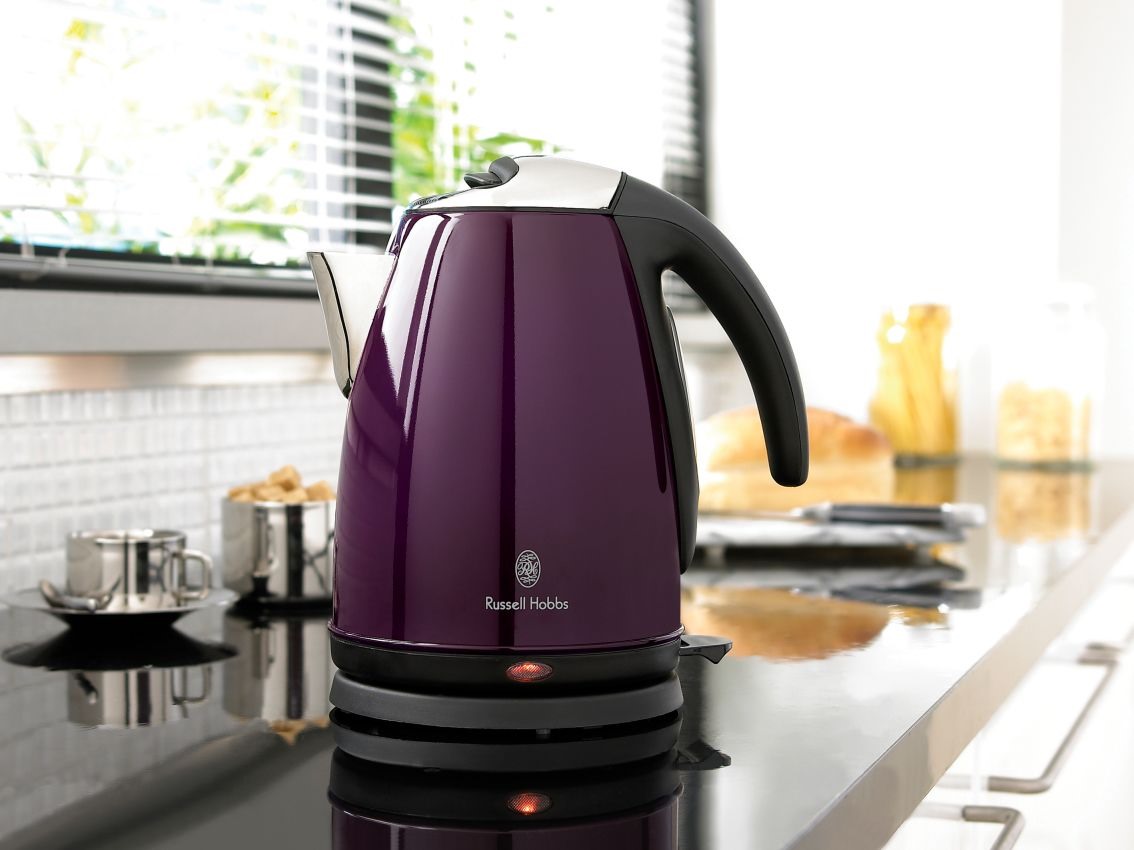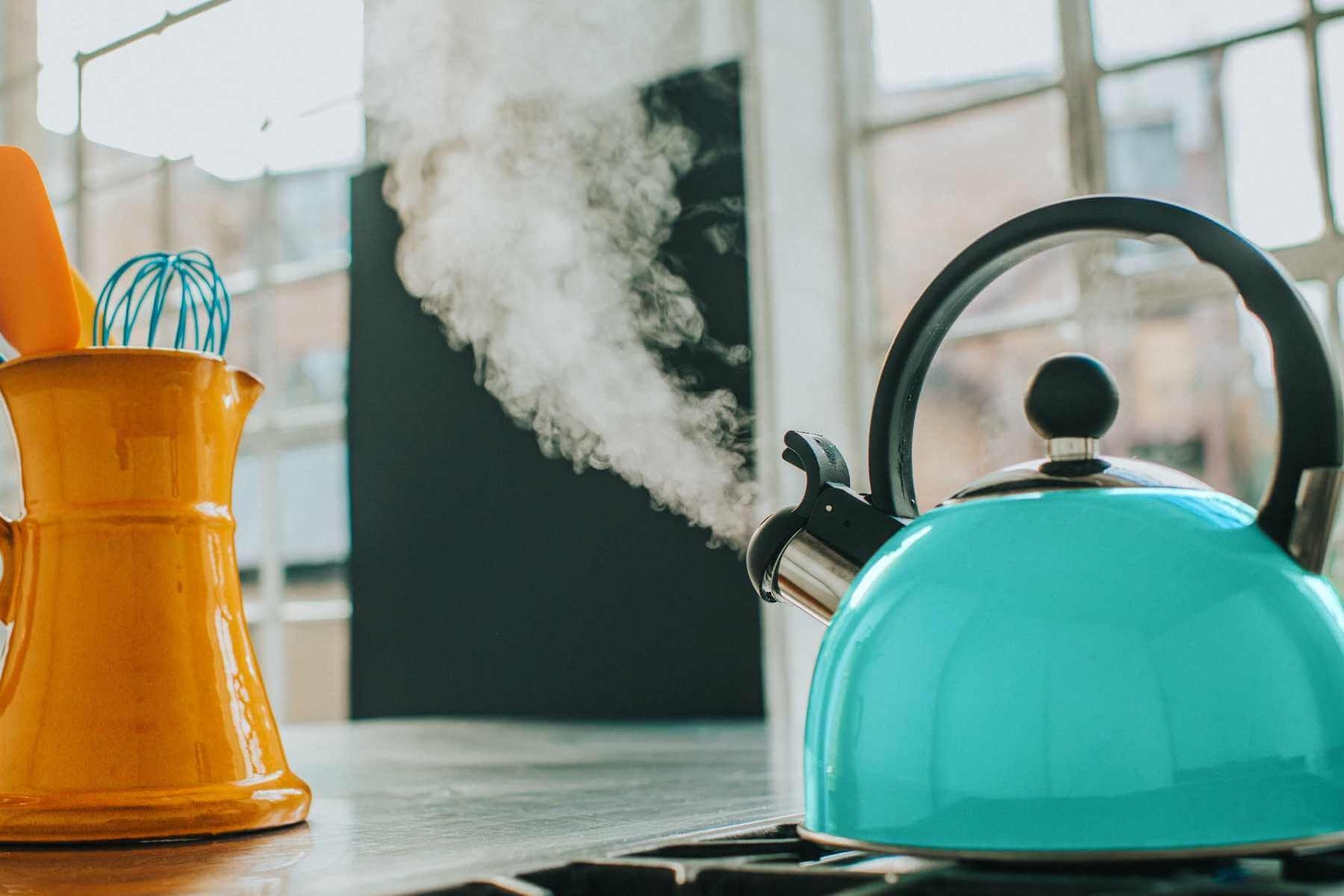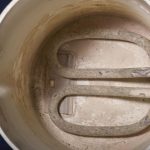Cleaning a kettle from limescale with vinegar - how to clean it correctly
Every year the quality of drinking water is getting worse and worse - just look at the scale layer in the kettle. Not only does this shorten its service life, it also introduces its own "additive" into the composition of the water, which is clearly not useful.

That is why it is so important to remove limescale in a timely manner, since there are currently an abundance of methods and means: from the most elementary, to, in fact, laboratory ones. However, the methods of descaling the kettle with vinegar are quite simple and accessible to everyone.
What is the point of descaling?
Any water (except distilled water), even the purest artesian water, contains dissolved salts and minerals. This is normal, however, from the point of view of chemistry. For an ordinary kettle, this state of affairs turns into the appearance of a plaque on the walls, an increase in the boiling time, and for an electric kettle, a failure of the heating element.
This phenomenon is caused by the low thermal conductivity of the scale, which leads to overheating of the metal parts of the case and heating element.
In most cases, mineral deposits are a mixture of magnesium and calcium carbonates, and when using tap water, also chloride compounds with iron particles. It is possible to determine what exactly prevails in the scale by its color: light - an excess of chlorine, reddish - a lot of iron, yellowish - a classic lime composition. Naturally, all this "poisons" into water when boiled.
Why vinegar? How does it affect scale?
Cleaning the kettle with vinegar so widespread in everyday life is explained by the action of the acid present in it on limescale. The fact is that when interacting with it, esters of carbonic acid, in combination with alkaline earth metals, which are normally insoluble in water, are converted into readily soluble acetates (salts). This explains the possibility of descaling.

Therefore, all acidic substances will be effective here, and not just vinegar alone. In this case, the mandatory requirement to heat the solution is explained by the elementary acceleration of the course of chemical processes.
Important! Similar chemical processes take place not only with acetic acid. Citric and phosphoric acids, which are found in some products, also have a similar effect.
Methods for descaling a kettle with vinegar
When it comes to descaling, in most cases, it means the use of "improvised" products and household chemicals.The special preparations produced by the industry are used much less often, since the popular products give a completely acceptable result when cleaning.

Table vinegar
Despite the huge number of all kinds of recommendations for using it to remove lime deposits, they all boil down to one principle. The required amount of vinegar solution (depending on the volume of the kettle: as a rule, half a glass or a glass of ordinary vinegar per liter of water) must be poured into the kettle, so that it goes a little beyond the boundaries of the plaque, boil and let it settle.

Depending on the thickness of the layer, it may take from a quarter of an hour to several hours. After - drain the solution and rinse well inside.
Acetic essence and ascorbic acid
Popular ways to descale a kettle with vinegar sometimes suggest rather unusual solutions. In this case, you will have to fill it with water two-thirds, then add 30 milliliters of vinegar essence.

Ascorbic acid must be ground in a volume equal to two tablespoons. Pour the resulting powder into a kettle. Bring the resulting composition to a boil and leave for 8-12 hours. Scale should be well removed with a sponge or brush.
Vinegar with sodium bicarbonate (soda)
Since vinegar reacts with baking soda, a certain procedure must be followed when using this method:
- Fill the kettle with water (not to the top).
- Pour in half a tablespoon of ordinary (9%) vinegar.
- Pour in 50-60 grams of baking soda.
- Boil the resulting solution. Maintain a simmer for a quarter of an hour.
- Drain the water.
- Remove plaque with a dishwashing sponge.
- Wash the kettle.
- Repeat if necessary.

Additional Information! Descaling with soda is not without foundation, since unlike cleaning a kettle with vinegar from scale, soda, reacting with water, forms carbonic acid molecules, which, in turn, converts limescale into bicarbonates. Therefore, it becomes possible to remove plaque after soda treatment.
Acetic essence with citric acid
It makes sense to use a combination of such active, aggressive substances only if it is impossible to remove the scale layer by other means. The essence should be added first, in a proportion of 45-50ml. 2 liters of water and boil.

After complete cooling, the solution must be drained and initial cleaning (with a brush) carried out. Next, pour a new portion of water, add a tablespoon (with a slide) of citric acid, bring to a boil and hold for 5-10 minutes. Drain the liquid. Rinse the kettle.
Descaling folk remedies: an overview
The so-called "people", in their advice on caring for kitchen utensils, often turns out to be really right, however, the means and methods that are recommended to be used cannot but surprise:
Boil a couple of lemons
Since it is not always possible to descale the kettle with vinegar (smell), you can take an ordinary lemon or two (depending on the volume of the kettle) and boil it in it for a quarter of an hour.

The natural acid found in lemon can work well.
Boil Pepsi-Cola or Sprite
Most likely, this recipe appeared due to the presence of phosphoric acid in these drinks, which is added to reduce the susceptibility to increased sugar concentration.

Before use, you need to get rid of carbon dioxide, then pour the drink into the kettle (usually half a liter, liter) and boil. Pour out after cooling completely.
Use cucumber pickle
This makes some sense, since brines contain acetic and lactic acid. The filtered liquid must be poured into a container and brought to a boil. Let it stand for several hours, then drain, and rinse the kettle thoroughly until the specific smell disappears.

The scale is removed mechanically with a brush. Cleaning the kettle with vinegar has a similar effect.
"Compote" from potato peel and apple peel
A mixture of potato peels and peel from apples or pears is put into the kettle. Then, after boiling, all this brew must be kept on low heat for at least half an hour. After cooling down, empty the container.

Perhaps this will give some effect, but only with a slight plaque.
Cleaning teapots made of various materials
As a rule, all of the above methods and substances are suitable for cleaning the inner surfaces of walls from a wide variety of materials.

The only exceptions are design features that may be important in the case of using special technologies in the manufacture of dishes.
How to descale an enamel kettle?
When cleaning an enamel kettle using vinegar, you may encounter the problem of removing a specific odor. Therefore, first of all, it is worth trying to remove scale with soda, citric acid or a specially developed composition.

Glass
This material is distinguished by good resistance not only to the formation of limescale, but also to the effects of aggressive reagents. Therefore, you can clean such a kettle by any means.

Electric kettle
The only limitation that can affect the choice of one or another method is the presence of a heating element, since it is not recommended to descale the kettle with vinegar or citric acid.

Nevertheless, there are many confirmed results of successful descaling using these substances. First of all, you need to try the soda, and only then - to act according to the circumstances.
Stainless steel
Allows processing with both soda and vinegar, and citric acid. As a rule, the external, polished surface requires careful handling.

Infuser
These teapots are usually made of ceramics. The same rules apply here as for removing plaque from glass surfaces.

Cleaning the kettle with vinegar: preventing limescale build-up
To avoid wasting time removing a thick layer of limescale or, worse, planning a new purchase, you should regularly do preventive cleaning.

Also, when using, you must adhere to the general recommendations:
- Rinse the inside of the kettle frequently.
- Use filtered water. If it is not possible to provide high-quality cleaning, it is advisable to settle the water before boiling.
- Carry out preventive cleaning at least once a month.
- Do not add more water than required.

For preventive cleaning, folk remedies are suitable.
Keeping the dishes clean, as well as regularly removing mineral deposits on the inside of the teapot walls, directly affects both the taste of the finished drinks and health.
The last aspect is the main argument, especially considering that the methods of descaling the kettle with vinegar are simple, do not require special costs and everyone can do it. The main thing is not to be lazy to do it.
Video: how to descale a kettle











